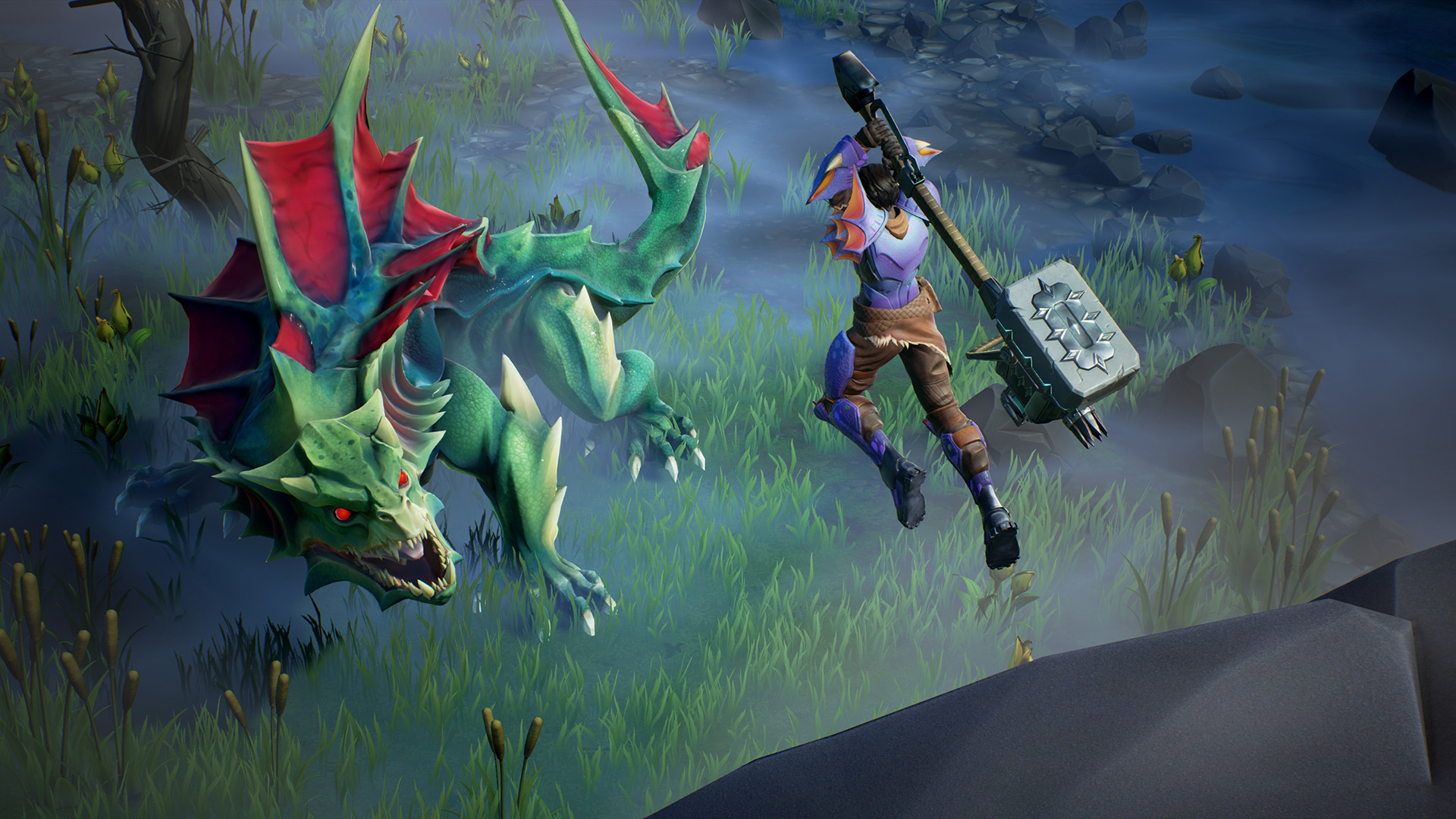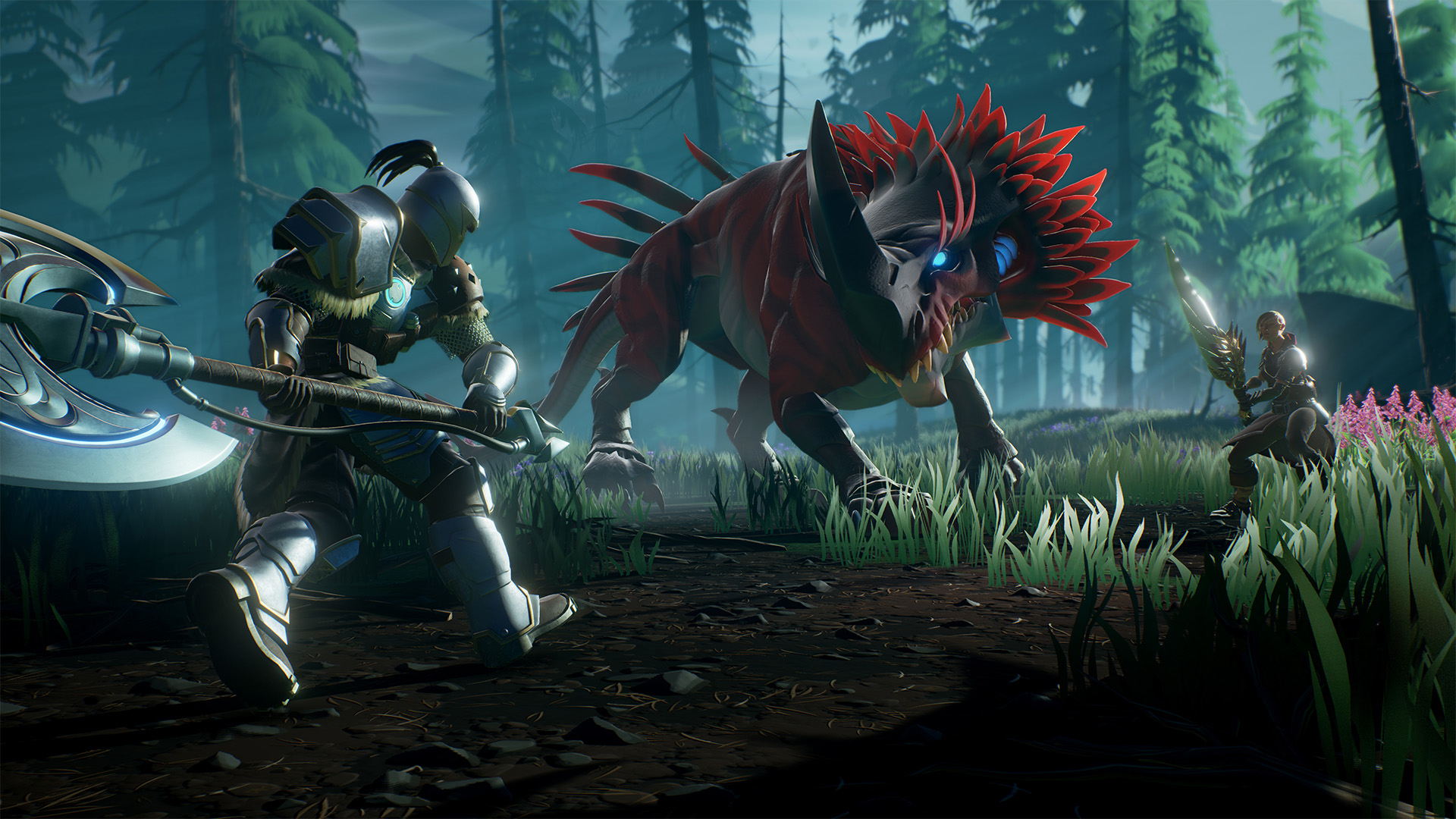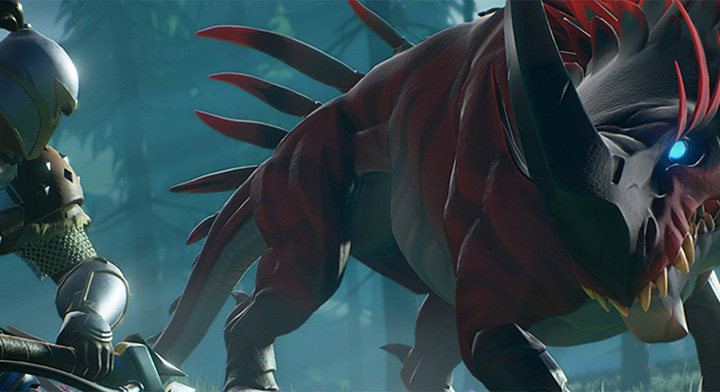Hey there Slayers – My name is Chris Fox, combat designer at Phoenix Labs. Since we announced a couple weeks ago, we’ve received a lot of feedback and questions around combat in Dauntless. Today we’re going to take a sneak peak at how we approach combat feel in Dauntless, from the fundamentals of simply hitting things to the tuning of systems like stamina. There’s still so much more to reveal in the new year, but here’s a preview of what’s to come.
Dauntless is all about capturing the tension and excitement of going toe-to-toe with ferocious, snarling behemoths. Slaying something as lethal as a behemoth should be a rush. But every encounter must also be fun, strategic, and challenging – not just a breakneck, repetitive hack-and-slash.
Imagine a slayer fully charging up their axe with aether and unleashing a devastating blow into the hide of a charging behemoth. It’s a compelling image. So, how can we translate that feeling into the actions players will perform? How do we keep that feeling fresh and exciting a thousand times over?
It’s a lot to balance, but nailing it has been critical in making Dauntless the compelling action-RPG we envisioned.

Back to the Basics
We love action games. Devil May Cry, Bayonetta, Dark Souls, Monster Hunter — these are the games we keep coming back to. They’re wildly different experiences, but they all have one core thing in common: amazingly crunchy and satisfying melee combat. It’s more than just cool looking weapon trails, hit pausing, splashy hit impacts, or screen shake. It all has to add up to make combat feel great.
Picture every weapon strike on a timeline where each layer works together to create a satisfying moment. Each element fires in sequence and complements one another. But, before I go on too much about fine tuning the end result, let’s talk fundamentals.
- Start with the swing – Does swinging a sword around in an empty level feel great and look cool? Elements like weapon trails and subtle screen shake contribute immensely to this. If it doesn’t feel good to just swing a weapon, it’s not going to feel good to make contact.
- Pick a fight with a rock – How does hitting a stationary object feel? A few frames of hit pausing and some nice, directional impact effects really help to sell the weight of the weapon and the force of the impact. If you’re satisfied with beating on helpless punching bags, you’re ready to start thinking about behemoths.
- If it bleeds… – How does a rampaging, two-ton, aether-fueled beast respond to getting slashed, pummeled, or stabbed? Do they recoil in pain and scream in anger? Does aether seep from the wound? Can damage interrupt their attacks? Games are all about empowering players to make an impact in their world, and ensuring that every action has an equal and opposite reaction is a fantastic way of capturing this.
- Bring it all together – When hitting a behemoth once feels rewarding, we can start to think about combos. We’ll be going into greater detail on combos in a later blog, but the most important part for us is creating meaningful choice. Each weapon has to have its own unique and varied combo tree that allows for choice in how you can approach a situation. This is what separates strategy and execution from button mashing.
When each component of combat serves a purposes and feels great, the whole experience comes together. I whipped something together to help illustrate what I’m talking about. This is still very early and very much work in progress.
Stamina (the risk vs. reward bar)
Actions feel better when their reward is tied to an element of risk. If a player can swing away and dish out damage without drawbacks, the whole experience begins to lose its luster. Stamina forces players to weigh their options and keeps them engaged with every swing of their weapon.
In Dauntless, stamina is consumed by powerful offensive actions for example axe charges, sword combos, and other attacks. It’s also used for defensive and movement abilities like dodging and sprinting. This creates a cost/benefit dynamic when using stamina for attacks. If a player uses all of their stamina attacking, they’ll be exposed and at the mercy of the behemoth’s next attack. Conversely, you won’t be able to capitalize on openings for massive damage if you use all your stamina to dodge.
A great example of this is dodging to cancel out of an axe charge. It’s an incredibly versatile evasive option, but the cost is high. Do you risk getting slammed for a chance at extra damage or use a little more stamina to play it safe?
The stamina bar gives weight to player choices by clearly illustrating risk. When done correctly, there’s no one right answer, just meaningful decisions for players to make.

Okay, cool. Those are some of the basics of attacking and stamina. There’s still tons more in store, including combos, elemental attacks, and new weapons to share. We’ll be covering all of that in future blogs, and I’m really looking forward to discussing combat with you all over the coming weeks and months. If you have questions or feedback, hit me up on the forums (MuckyBarnes), or at @cjopant on Twitter.


